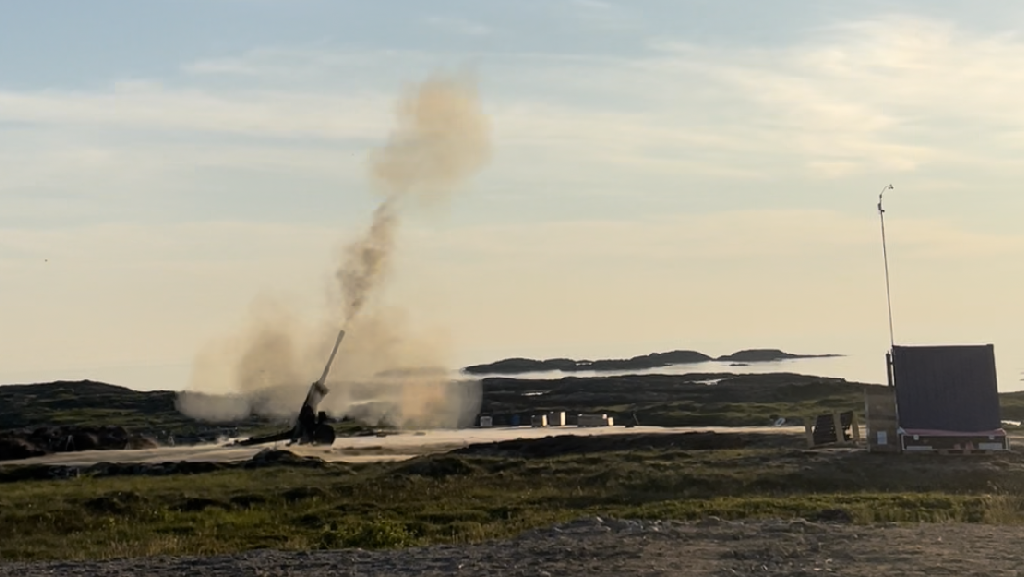
Boeing and Nammo jointly tested their Ramjet 155 projectile in Norway. (Courtesy of Boeing)
SMD 2022 — Boeing and Norwegian defense company Nammo successfully tested their air-breathing artillery projectile in Norway, the companies announced today, the latest development in the US Army’s effort to develop longer range artillery for future conflicts.
The Ramjet 155 projectile is part of the Army’s XM1155 program, an effort under the service’s Extended Range Artillery Munition Suite Technology effort that’s exploring advanced technology to extend the reach and effectiveness of artillery rounds.
“We believe the Boeing Ramjet 155, with continued technology maturation and testing, can help the U.S. Army meet its long-range precision fires modernization priorities,” said Steve Nordlund, Boeing Phantom Works vice president and general manager, said in a statement. “This successful test is evidence that we are making great progress.”
According to Dan Palmeter, business development lead for Boeing Phantom Works, the June 28 test successfully verified that the ramjet projectile could stay stable in flight and that the ramjet engine was able to ignite to sufficiently propel it.
“The biggest challenge we’ve had with it is to get it stable, get it flying, get good thrust [and] get good motor burn,” Palmeter told Breaking Defense in an interview at the Space and Missile Defense Symposium in Huntsville, Ala.
Boeing describes the Ramjet 155 projectile as a “hybrid” between guided artillery and a missile. The successful test of the ramjet projectile is an important step forward, Palmeter said, because now Nammo and Boeing can focus on other capabilities, such as range.
“Once you have the propulsion and the stability figured out, then comes the range, the guidance and the rest of the system,” Palmeter said.
According to a Boeing fact sheet, the ramjet technology aims to extend the Army’s 155m howitzer’s range to more than 70 kilometers, up from 40 kilometers.
According to Mark Altobelli, director of Boeing Phantom Works, that the ramjet projectile survived the cannon launch was a victory in itself, as that has presented a challenge in the past. The companies said they have now completed over 450 tests of the artillery.
“In terms of packaging, think of it almost like a philharmonic orchestra,” Palmeter said. “Everything has to be working in concert.”
With the flight stability and propulsion performance verified in the recent test, the team will now work toward guided flights, which Altobelli called the “next big milestone.” Those flights will occur in 2023 and 2024, he said.
The Army awarded Boeing and Nammo a contract in July 2019 to develop the Ramjet 155 projectile and was subsequently awarded a phase two technology development contract in May 2021, according to Boeing.
“We have great confidence in the ramjet concept,” Nammo Chief Executive Officer Morten Brandtzæg said in a statement. “The test — with all aspects from cannon firing, to the projectile body, fins, and trajectory all functioning perfectly — represents a real technological breakthrough in artillery, and a major success for Boeing, Nammo, and the U.S. Army.”






















